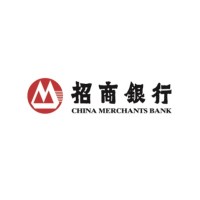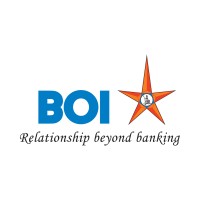Company Cyber Security Posture
NANA
NA Company Details
NA
NA
NA
NA
NA
NA
Scan still pending
NA
NA
Between 200 and 800
This score is AI-generated and less favored by cyber insurers, who prefer the TPRM score.
 NA Global Score
NA Global Score.png)

Company Scoring based on AI Models
| Model Name | Date | Description | Current Score Difference | Score |
|---|---|---|---|---|
| AVERAGE-Industry | 03-12-2025 | This score represents the average cybersecurity rating of companies already scanned within the same industry. It provides a benchmark to compare an individual company's security posture against its industry peers. | N/A | Between 200 and 800 |
Company Cyber Security News & History
| Entity | Type | Severity | Impact | Seen | Url ID | Details | View |
|---|
Company Subsidiaries

NA
Access Data Using Our API

Get company history
.png)
NA Cyber Security News
Introducing the smarter, more sophisticated Malwarebytes Trusted Advisor, your cybersecurity personal assistant
Malwarebytes Trusted Advisor has had an update, and it's now sharper, smarter, and more helpful than ever.
Trump AI plan calls for cybersecurity assessments, threat info-sharing
The U.S. government will expand information sharing, cyber risk evaluations and guidance to the private sector to address the cybersecurity ...
Contract lapse leaves critical infrastructure cybersecurity sensor data unanalyzed at national lab
Data from sensors that detect threats in critical infrastructure networks is sitting unanalyzed after a government contract expired this weekend ...
The role of the cybersecurity PM in incident-driven development
From PowerShell abuse to USB data theft, modern threats hit fast—and hard.vSee how security-minded PMs are responding with real-time ...
Okta (OKTA) Strengthens Cybersecurity Stack Through New Palo Alto Integration
As part of the update, Okta's platform now supports access to single sign-on applications exclusively through Palo Alto Networks' Prisma Access ...
Wake Tech program molds cybersecurity experts of the future, helps inform business owners
Wake Tech is shaping the future of cybersecurity with its innovative Sentinel program, empowering students to become industry experts while ...
Microsoft Used China-Based Support for Multiple U.S. Agencies, Potentially Exposing Sensitive Data
Microsoft says it will no longer use China-based engineers to support the Pentagon. But ProPublica found that the tech giant has relied on ...
Agentic AI Turns Enterprise Cybersecurity Into Machine vs. Machine Battle
The first AI-driven preemptive cyber-defense has taken place. Now, corporate leaders may need to confront questions about agentic AI.
The books shaping today’s cybersecurity leaders
From strategy and psychology to history and decision-making, these are the books CISOs recommend to sharpen your thinking, influence your ...

NA Similar Companies

Banco de Chile
Somos una Corporación líder y comprometida con el país que brinda servicios financieros de excelencia a cada segmento de clientes. Buscamos permanentemente ser el mejor Banco para ellos, ser el mejor lugar para trabajar y ser la mejor inversión para nuestros accionistas. Lo hacemos de forma colabora

China Merchants Bank
Established in 1987 in Shenzhen, the forefront of China’s reform and opening-up drive, China Merchants Bank ("CMB") has developed into the most influential commercial bank brand in China thanks to continuous financial innovation, quality customer service, prudent management and strong business perfo

Bank of India
Welcome to Bank of India's official LinkedIn page! Join us & stay tuned to learn about our products, exciting offers & latest happenings. Bank of India was founded on 7th September, 1906 by a group of eminent business professionals from Mumbai. The Bank was under private ownership and control till J

Lion Finance Group PLC
Lion Finance Group PLC (formerly Bank of Georgia Group PLC) is a FTSE 250 holding company, whose main operating subsidiaries are leading, customer-centric universal banks – Bank of Georgia in Georgia and Ameriabank in Armenia. Building on our competitive strengths, we drive business growth and mai

ING
ING is a pioneer in digital banking and on the forefront as one of the most innovative banks in the world. As ING, we have a clear purpose that represents our conviction of people’s potential. We don’t judge, coach, or tell people how to live their lives. However big or small, modest or grand, we em

Raiffeisen Switzerland
Raiffeisen Switzerland is the third largest banking group in Switzerland. Raiffeisen Switzerland has a cooperatively structured group is one of Switzerland's leading retail banks. Today, Raiffeisen has 3.6 million Swiss citizens as clients. Of these, 1.9 million are cooperative members of their Rai

Frequently Asked Questions
Explore insights on cybersecurity incidents, risk posture, and Rankiteo's assessments.
NA CyberSecurity History Information
How many cyber incidents has NA faced?
Total Incidents: According to Rankiteo, NA has faced 0 incidents in the past.
What types of cybersecurity incidents have occurred at NA?
Incident Types: The types of cybersecurity incidents that have occurred include .
Additional Questions
What Do We Measure?
















Every week, Rankiteo analyzes billions of signals to give organizations a sharper, faster view of emerging risks. With deeper, more actionable intelligence at their fingertips, security teams can outpace threat actors, respond instantly to Zero-Day attacks, and dramatically shrink their risk exposure window.
These are some of the factors we use to calculate the overall score:
Identify exposed access points, detect misconfigured SSL certificates, and uncover vulnerabilities across the network infrastructure.
Gain visibility into the software components used within an organization to detect vulnerabilities, manage risk, and ensure supply chain security.
Monitor and manage all IT assets and their configurations to ensure accurate, real-time visibility across the company's technology environment.
Leverage real-time insights on active threats, malware campaigns, and emerging vulnerabilities to proactively defend against evolving cyberattacks.




